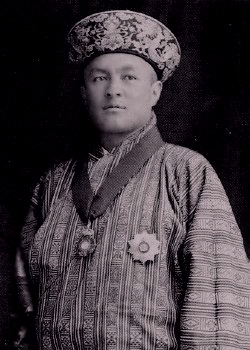
Bhutan, often called the Land of the Thunder Dragon, has a royal history that continues to shape its development.
Following the reign of Ugyen Wangchuck, Bhutan’s first king, the nation experienced another period of transformation under his son, Jigme Wangchuck, the second king of Bhutan. His reign brought important changes to Bhutan while preserving its unique identity.
Let’s explore the life and contributions of Jigme Wangchuck, the second king of Bhutan, and how he helped guide the country through a critical time of modernization.
Who Was Jigme Wangchuck, The Second King Of Bhutan?
Early Life And Becoming The Second King Of Bhutan
Jigme Wangchuck was born into a royal family that had unified Bhutan under the first hereditary monarchy. He grew up learning about leadership and governance from his father, who had established Bhutan’s modern political structure.
By the time he became king at 21, Jigme Wangchuck was prepared to lead Bhutan through its next development phase.
When he took the throne in 1926, he inherited a peaceful and united country. His challenge was to preserve the stability his father had achieved while gradually introducing reforms that would modernize Bhutan without disrupting its traditions.
The Leadership Of Jigme Wangchuck: Stability And Progress
Jigme Wangchuck’s leadership was focused on maintaining stability while making gradual improvements to Bhutan’s administration and infrastructure.
He centralized governance to ensure that the country remained unified and well-managed, building on the systems his father had established. This centralization allowed Bhutan to remain strong and independent during a time of global change.
He believed in progress, but he introduced changes slowly to ensure they were sustainable. His policies were practical and aimed at improving the quality of life for the Bhutanese people without compromising the country’s cultural heritage.
Jigme Wangchuck And Bhutan’s Gradual Modernization
Though Bhutan remained cautious about outside influence during Jigme Wangchuck’s reign, he introduced key developments that helped modernize the country. He focused on building infrastructure, such as roads and administrative buildings, to improve governance and connectivity within the country.
Jigme Wangchuck also prioritized agriculture, introducing modern farming techniques that helped increase food production.
His focus on self-sufficiency ensured that Bhutan could meet its own needs and reduce reliance on external resources. His approach to modernization was slow and steady, with the aim of preparing Bhutan for future changes without rushing the process.
Legacy Of Jigme Wangchuck And The Foundation For The Future Of Bhutan
Jigme Wangchuck’s reign set the stage for further growth in Bhutan. While his reforms were not sweeping, they were carefully designed to strengthen the country’s foundations.
His focus on infrastructure, agriculture, and centralizing governance ensured that Bhutan could continue to progress in a way that preserved its cultural values.
The second king of Bhutan is remembered for his thoughtful leadership, which allowed the kingdom to remain stable and independent while preparing for the changes that would come in the decades ahead.
Conclusion About The Second King Of Bhutan
Jigme Wangchuck, the second king of Bhutan, guided the country through a period of steady progress. His leadership ensured that Bhutan remained united and independent while introducing practical reforms that improved the lives of its people.
His reign provided a strong foundation for the country’s continued development, balancing tradition with the need for modernization. If you wish to learn more of Bhutan’s history, read our feature on the 5 Kings of Bhutan, their legacy and how they shaped the country as it is today.
Ready to explore the history and heritage of Bhutan? Plan your trip with Druk Asia and experience the land of the Thunder Dragon, where tradition meets progress. Discover the legacy of Bhutan’s great kings as you explore this beautiful kingdom with expert guidance.
Frequently Asked Questions About The Second King Of Bhutan
How Long Did Jigme Wangchuck Rule Bhutan?
Jigme Wangchuck ruled Bhutan from 1926 until his death in 1952, making his reign last 26 years. During this time, he introduced gradual reforms that helped modernize the country while preserving its traditions.
How Did Jigme Wangchuck’s Leadership Style Differ From His Father’s?
While Ugyen Wangchuck, the first king, focused on uniting Bhutan, Jigme Wangchuck focused on maintaining stability and introducing gradual modernization. He was careful to balance progress with tradition, unlike his father, whose reign was more centered on consolidation and unification.
How Did Jigme Wangchuck Strengthen Bhutan’s Independence?
Jigme Wangchuck’s careful leadership ensured Bhutan remained independent by centralizing power, promoting self-sufficiency in agriculture, and avoiding heavy reliance on external influences or resources.
His diplomatic approach maintained Bhutan’s sovereignty during a time of significant political change in the region.
What Role Did Religion Play During Jigme Wangchuck’s Reign?
Jigme Wangchuck respected Bhutan’s religious traditions, particularly the strong role of Buddhism in the country’s culture. While introducing reforms, he ensured that Bhutan’s spiritual and cultural practices remained central to everyday life.
